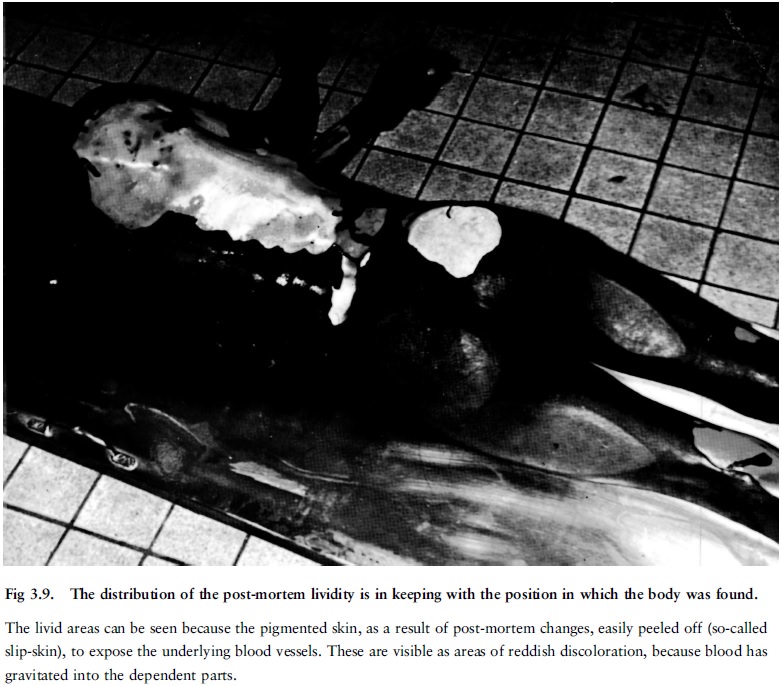Chapter: Forensic Medicine: Post-mortem changes
Late post-mortem changes
Late post-mortem changes
Decomposition
Decomposition is a process originating as result
of the breakdown of the body by enzymes. These enzymes can be from the body
itself (the process is then called autolysis) or from other organisms,
(heterolysis). Generally the process is known as putrefaction.
Although both these processes set in immediately
at death, the condition is only visible at a later stage. The environmental
temperature plays an important role: in a refrigerator the process will be
suppressed, while in a warm environment it will be accelerated. There is
therefore a considerable amount of variation.
Autolysis is especially visible in the pancreas
(racemose gland) where the enzymes leak out of the cells after death and digest
the surrounding tissue. The spleen is often autolytic in cases of sepsis
(autolysis means the spontaneous disintegration of tissues of an organ see - above).
The bacteria which play the most important part
in putrefaction originate from the alimentary canal. They include
oxygen-dependent (aerobic) and non-oxygen-dependent (anaerobic) organisms. The
latter group is mostly responsible for the production of gas and the offensive
odour of a decomposing body. In persons who die due to septicaemia there
already is an abundance of organisms in the body at the time of death, which
naturally will accelerate the whole decomposition process.
During putrefaction the whole body discolours to
greenish-black, becomes bloated due to gas production, and the skin strips
(slips) off (fig 3.9). The blood vessels of the skin often show up prominently
due to the broken-down blood (haemolysis) which reacts with the hydrogen
sulphide produced by bacteria. This gives the effect of marbling. The process
of liquefaction of the soft tissue is often promoted by the activity of
maggots.

Mummification
Mummification occurs in dry climates, where the
body literally dries out like biltong. This happens in hot as well as cold, dry
climates, for example the Namib desert and also on Mount Everest. It can also
occur in cases where the body is lying in an environment with a high acid
content. In the case of the Tollund man, who was found in the swamps of
Jutland, which have a high acid content, the features were exceptionally well
preserved.
In the case of the bodies of newborn babies who
are concealed shortly after birth in a cardboard box, drying out also occurs.
This is because newborns are microbiologically sterile (they have not yet been
colonised by micro-organisms) and putrefaction is very slow.
Maceration
Maceration refers to autolysis (spontaneous
disintegration) in a foetus which dies while inside the mother (intra-uterine
death). As the contents of the uterus is sterile, there is no putrefaction. In
maceration the skin softens and large fluid-containing blisters appear, and the
skin then strips away. At the same time the internal organs soften and the
bones gradually loosen from the cartilage and tendon attachments.
Adipocere (wax) formation
In this condition water binds with the body fat
and forms a wax-like substance with a rancid odour. Bacterial enzymes
contribute to the process. It is also known as saponification or transformation
of body fat into soap.
Wax formation usually develops over a period of
weeks to months and it suppresses further decomposition of the body. Should the
process manifest in the face, it can preserve the features to an extent. It can
also preserve wounds and other signs of trauma.
Skeletisation
After all soft tissue has been destroyed,
whether on account of decomposition or, amongst others, maggot and rodent
activity, only the skeleton remains. Cartilage and ligaments can survive for
some time. Exposure of the bones to the elements eventually causes bleaching.
Finally only porous brittle bone that fragments into minute pieces during
handling remains.
The skeleton can be useful for a considerable
time for identification of the deceased and determining how long the person has
been dead.
Related Topics